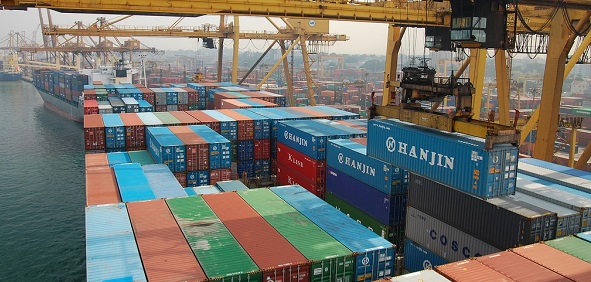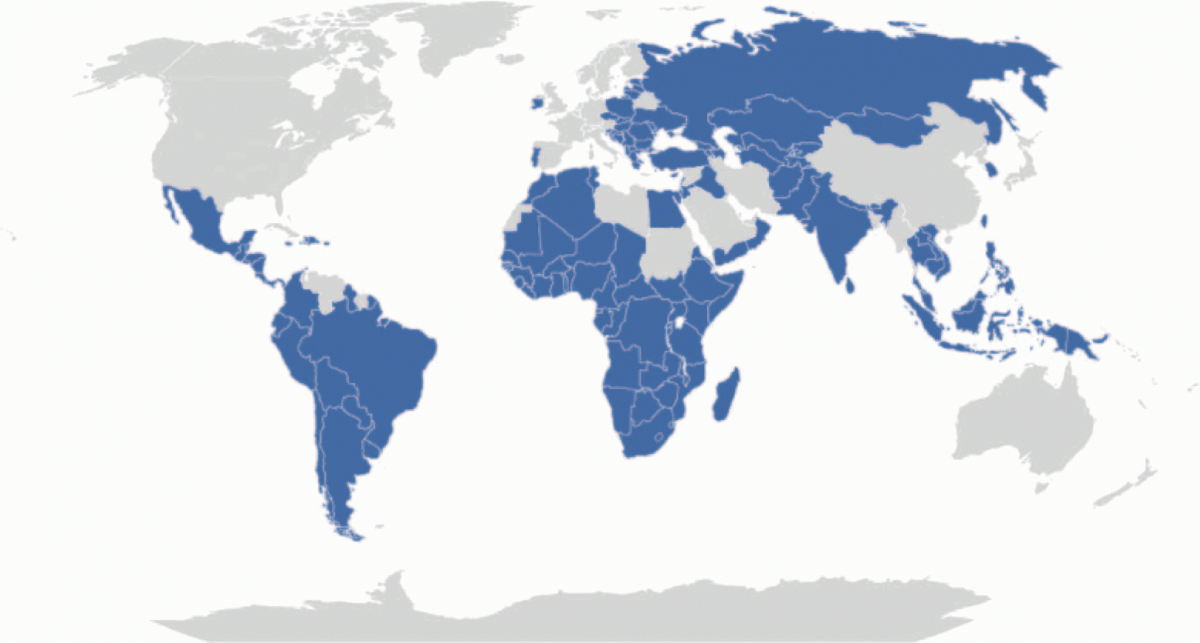US’ OPIC vs China’s BRI
April 13, 2019 | Expert Insights

China’s controversial Belt and Road Initiative is pitted against the US’ Overseas Private Investment Corporation in a global race for geopolitical, economic and normative primacy.
Background
The Belt and Road initiative (BRI) is a development strategy adopted by the Chinese government, involving infrastructure development and investments in countries in Europe, Asia and Africa. It was originally announced by the Chairman of the People Republic of China Xi Jinping during his official visit to Indonesia and Kazakhstan in 2013. "Belt" refers to the overland routes for road and rail transportation, called "the Silk Road Economic Belt"; whereas "road" refers to the sea routes or the 21st Century Maritime Silk Road. The Chinese government calls the initiative "a bid to enhance regional connectivity and embrace a brighter future.” Some observers see it as a push for Chinese dominance in global affairs with a Sino-centred trading network.
The Overseas Private Investment Corporation (OPIC) is an American initiative that mobilises capital in an effort to help solve critical developmental challenges, while simultaneously advancing the foreign policy of the United States and its national security objectives.

Analysis
OPIC has recently entered into a trilateral agreement with Canada and the European Union (EU) seeking “to advance shared development objectives and underscore the participant’s commitment to providing a robust alternative to unsustainable state-led models.” In a similar vein, in 2018, the OPIC had entered into a similar partnership with Japan and Australia in an effort to ensure the economic and sovereign rights of nations in the Indo-Pacific. That partnership yielded a permanent OPIC commission in Tokyo in order to help coordinate projects.
The pact between the US (through the OPIC), Canada and the EU are likely to augment efforts between the three to allow their strategic and tactical collaboration. Particularly it would allow cooperation in terms of investments. OPIC’s acting president and chief executive, David Bohigian emphasised a focus on five principles; the sovereignty of the host nation, environmental protection, local job creation, transparency, and ensuring projects are sustainable, long-term affairs.
The OPIC is expected to receive a massive boost from the United States government, especially related to the agencies’ powers. Its portfolio cap will be increased from US$29 billion to US$60 billion, in addition to newly granted authority to engage in equity investments, as opposed to the current focus on financing and political risk insurance. The OPIC will undergo a name change to the United States International Development Finance Corporation (DFC), absorbing some resources from the United States Agency for International Development. The new agency will “help countries sidestep opaque and unsustainable debt traps being laid by Beijing throughout the developing world and help more America businesses invest in emerging markets, including many places that are of key strategic importance to the United States.”
Criticism continues that the BRI’s lending programs encumber weaker economies with exorbitant levels of debt in order to bolster China’s geopolitical ambitions when these countries inevitably default and surrender control of critical infrastructure to Beijing. For example, when Sri Lanka’s Hambantota Port, funded by a Chinese state-controlled bank, defaulted on debt repayment, a Chinese holding company gained operational command of the port.
The strategic OPIC partnership is intended to show countries around the world that there exists a healthy financing and investment alternative to China’s BRI. The announcement comes at the heels of news that Italy, a major G7 economy, has signed on to the BRI. The US has been vocal of its displeasure with a White House National Security Council spokesperson saying that there was “no need for (the) Italian government to lend legitimacy to China’s infrastructure vanity project.” The move continues to pit China against the US in a battle for economic, geopolitical and normative primacy around the world.
Assessment
Our assessment is that the OPIC, and its impending evolution into the DFC, is intended to promote an alternative to China’s BRI. We believe that although the OPIC initiative also comes attached to America’s geopolitical interests, these are more transparent than those offered by China. We believe that China’s model is predatory and can come with harsh long-term effects. China’s propensity to engage in infrastructure projects with Chinese nationals is antithetical to America’s finance-driven model geared towards indigenous job construction. We believe that although prerequisites of both projects may bring up questions of national interest, we believe that America’s capitalist, liberal and democratic mindset is more amenable to bringing mutually beneficial results.
India Watch
India has maintained reservations over China’s BRI, viewing it with suspicion. Conversely, India has widely engaged with the OPIC, especially in the micro-financing, housing, agriculture and renewable energy sectors. We expect such engagement to continue, especially given the participation of traditional Indo-Pacific partners such as Japan.
Image Courtesy: https://upload.wikimedia.org/wikipedia/commons/0/09/ColomboHarbour-SriLanka02.jpg, jgmorard [CC BY 2.0 (https://creativecommons.org/licenses/by/2.0)]
Map Courtesy: https://upload.wikimedia.org/wikipedia/commons/1/1c/Countries_OPIC_supports_with_U.S._private_investment.gif, Work for hire @ Overseas Private Investment Corporation [Public domain]
Read more:








Comments